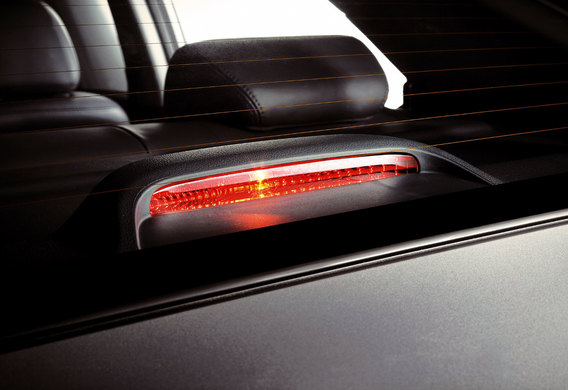
Every year, cars are becoming more sophisticated, technology-based and saturated with electronics. The number of security systems, which control not only the car, but also the driver, is growing exponentially. At the same time, the "champion" in the number of accidents and saved lives has remained a stop-signal, which has not undergone major changes in 90 years of its existence.
Until the 20 years, only the rear wheels of the vehicle were equipped with brakes. The construction of cars of different manufacturers of brakes on all four wheels led to the fact that cars were started on the roads, the stopping distance was very different. And since drivers could not determine when the car started to start, it led to a large number of accidents, even though the road traffic, even in the world's largest cities, was, to say the least, not as intense as it is today. As a result, it has become necessary to equip the vehicle with a device warning participants of the braking movement. The first stop lamps were aligned with the illuminating lamp. The lower half of the lamp was white, lit the license plate, and the upper red light was lit every time the driver started to stop.
In 1986, in America, automakers were obliged to equip the machines not only with two stop-signals on the sides, but also one in the center, above the right and left foot line. In Europe, the law was introduced later in 1998. The additional stop signal was initiated by US Secretary of State Elizabeth Doole. So along with the names "central" and "third" in America, it is possible to meet and joke-"Liddy's Light".
The central stop-signal is particularly useful in countries where the signal lights are also red. In addition, the third signal remains visible to the driver, who is behind the car, at the minimum distance, say, in the cork. The third stop also insures that one of the lamps is burned and the vehicle is moving only with one stop lamp.

Both basic and additional stop lamps may be in the form of a single lamp, a set of LEDs, or a neon tube.
Alternates are also available for the installation of central stop lamps. For the Jeep Wrangler and the Land Rover Freelander, the extra stop is on the spare wheel holder
In addition to the standard "stops" that are burning when the brake pedal is applied, there are also stop lamps with additional functions. For example, the BMW cars in the stop lamps set LED lamps that have two modes of operation-they change the luminance brightness according to the braking rate. The next step in the history of automotive lighting can be laser stop signals that you can see on the concepts of Audi. The essence of the invention is that the emitter is projecting onto the road fabric behind the car, in the shape of a triangle, which is reflected by a drip of water during rain or fog. Thus, the driver will see in front of him on the road the devil's red colour.
For passenger cars, stop lamps may be located in different locations: the boot lid, rear positions, or rear fenders. The central stop-lamp may be located in the rear window at the top, on the back door or in the rear spoiler. Other installation methods are not common. For example, the Jeep Wrangler and the Land Rover Freelander are installed on the spare wheel holder. On commercial vehicles, vans and trucks, stop lamps are fixed on the edge of the roof.







